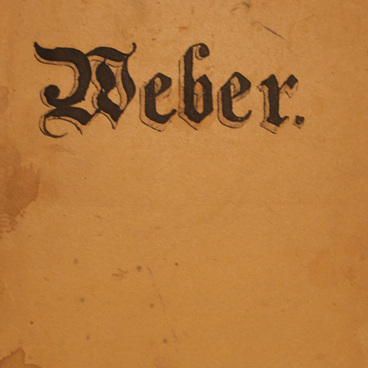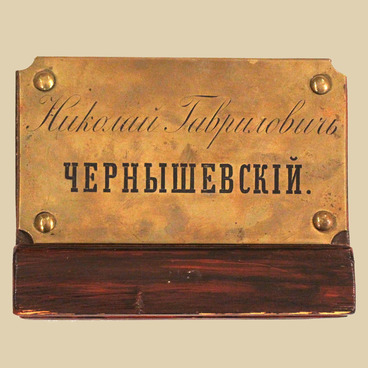The map N.G. Chernyshevsky in Penal Servitude is the first trial of spatial presentation of certain stages in the biography of the revolutionary writer. It was created by Konstantin Mikhailovich Fyodorov, the assistant and secretary of N.G. Chernyshevsky in Astrakhan and Saratov, the author of the first biography of the writer The Life of Great Russian People. N.G. Chernyshevsky. During the Great Patriotic War, Fyodorov worked as the academic secretary of the Memorial Estate of N.G. Chernyshevsky.
The map depicts the route of Chernyshevsky’s relocation during the years of penal servitude — from May 20, 1864, until December 20, 1871, — an marks the places he worked and lived at. Some places reflect the accurate dates when the convict stayed there. Ussolye and Kadaya have pictures attached.
In the top left corner, the portrait of Chernyshevsky dated 1870 is allegorically framed with the shackles. In the bottom, there are brief data about his literature studies and about his wife Olga with their son Misha coming to visit him.
Konstantin Fyodorov created the maps without any technical tools. Nina Mikhailovna Chernyshevskaya, the director of the museum, remembered: “He had absolutely unique methods of working. He used small scissors to cut out letters one by one from books and magazines … then he picked them with a thin needle and put on a narrow stripe on the map covered with glue. By doing so, he received inscriptions on the map. That was superfine exquisite workmanship requiring tremendous effort and stamina”.
Overall, he created 11 maps dedicated to different stages in the life and activities of Chernyshevsky: “Chernyshevsky in Saint Petersburg”, “Dissemination of Sovremennik in 1860”, “Chernyshevsky in the Fortress, in Penal Servitude and in Exile”, “Chernyshevsky on the Way to Penal Servitude”, “Chernyshevsky in Siberia”, “Chernyshevsky”s Return from Siberia”, “Chernyshevsky in Astrakhan” and others. The museum actively used all of them in its work in 1940-s. Some maps were created as posters with added illustrations, citations from the memoirs of witnesses of Chernyshevsky’s life in Siberia. During the same period, printed copies were made of certain maps.
The map depicts the route of Chernyshevsky’s relocation during the years of penal servitude — from May 20, 1864, until December 20, 1871, — an marks the places he worked and lived at. Some places reflect the accurate dates when the convict stayed there. Ussolye and Kadaya have pictures attached.
In the top left corner, the portrait of Chernyshevsky dated 1870 is allegorically framed with the shackles. In the bottom, there are brief data about his literature studies and about his wife Olga with their son Misha coming to visit him.
Konstantin Fyodorov created the maps without any technical tools. Nina Mikhailovna Chernyshevskaya, the director of the museum, remembered: “He had absolutely unique methods of working. He used small scissors to cut out letters one by one from books and magazines … then he picked them with a thin needle and put on a narrow stripe on the map covered with glue. By doing so, he received inscriptions on the map. That was superfine exquisite workmanship requiring tremendous effort and stamina”.
Overall, he created 11 maps dedicated to different stages in the life and activities of Chernyshevsky: “Chernyshevsky in Saint Petersburg”, “Dissemination of Sovremennik in 1860”, “Chernyshevsky in the Fortress, in Penal Servitude and in Exile”, “Chernyshevsky on the Way to Penal Servitude”, “Chernyshevsky in Siberia”, “Chernyshevsky”s Return from Siberia”, “Chernyshevsky in Astrakhan” and others. The museum actively used all of them in its work in 1940-s. Some maps were created as posters with added illustrations, citations from the memoirs of witnesses of Chernyshevsky’s life in Siberia. During the same period, printed copies were made of certain maps.



